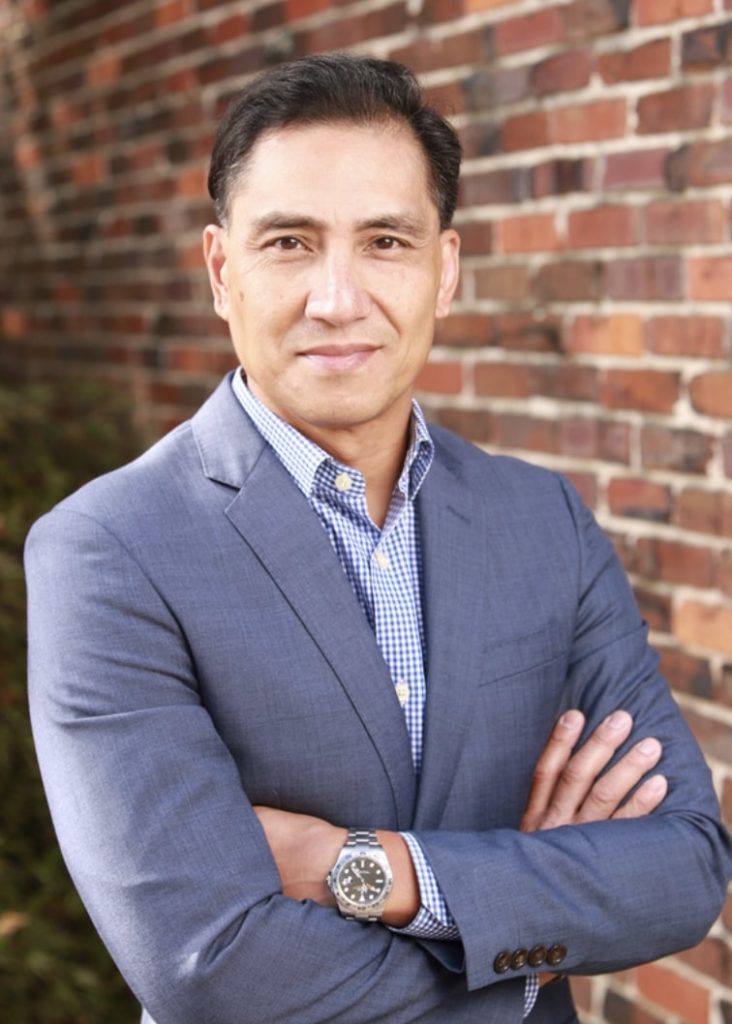
Breast Augmentation/Breast Lift in Memphis, TN with Dr. Lachica
Some women are unhappy with the size and/or shape of their breasts. These changes result from pregnancy, breastfeeding, weight loss, and age. Some have been dissatisfied with the appearance of the breasts since puberty.
Breast augmentation increases the volume and fullness of your breasts. A breast lift (mastopexy) corrects sagging by raising the overall position of the breast, tightening the skin, and creating a more rounded shape. Depending on the size and shape of your breasts and the resilience of your skin and underlying tissues, either breast augmentation or a breast lift (or both) can make you look and feel younger and more attractive.
To learn more about how breast augmentation or a breast lift might benefit you, contact The Langsdon Clinic today to schedule a consultation with Dr. Roberto Lachica, a board-certified plastic surgeon with more than 20 years of experience performing individualized aesthetic breast procedures.
What Is Breast Augmentation?
Breast augmentation increases the size and enhances the shape of your breasts, usually using silicone gel implants. Modest volume increases can also be achieved with fat transfer techniques.
Based on your unique anatomy and your aesthetic goals, he will guide you through the various options in planning your breast augmentation. He will then make the best recommendations regarding:
Breast Implant types (material):
Smooth silicone implants are the most commonly used implants because of their superior material qualities, natural appearance and feel, and durability. These implants contain a gel that is close to the density and flexibility of natural breast tissue. These implants are FDA-approved and have been scientifically proven to be safe over time.
Saline-filled implants are rarely used because of their inferior material and aesthetic properties. They tend to fold, rupture, and deflate over time.
Breast Implant profile (projection): A “high profile” implant will have a smaller “footprint” but project (“stick out” more) and are most commonly used when maximum volume enhancement is desired. Conversely, a moderate or low profile implant of the same volume will have a larger footprint but project less when a more natural look is desired.
Breast Implant shapes: The round implant is the most commonly used shape because of its ease of placement and consistency of position and appearance over time. In some instances, an anatomically-shaped (“teardrop”) implant may be used.
Breast Implant size: The most commonly used implant size is 250-400 cc. For reference, 240cc equals 8 ounces or 1 cup. For precise selection of implant size, a patient who wears a 34B bra who desires to wear a C cup bra is given a special bra with a 250cc silicone sizer to wear in front of a mirror and see her anticipated appearance. Sizers are adjusted accordingly to fine-tune the desired size.
Breast Implant placement: Breast implants are usually placed under the chest muscle (sub-pectoral) because of superior tissue coverage, aesthetic appearance, and lower risk of capsular contracture (internal scarring). In some instances, implants may be placed above the chest muscle (subglandular).
Breast Implant Incisions: The inframammary fold (crease) incision is most commonly used because of its camouflaged location, aesthetically superior scar, and lowest risk of complications. In some instances, a periareolar “half-moon” incision may be appropriate if the areola is large enough.
Dr. Lachica will help you make the two most important decisions in your breast augmentation: implant size and implant profile. He will use his years of skill and experience to help you decide which implant will give you the breast size and shape you desire now. Just as important, he will make sure that the implant choice is what is best for you in the long term (years or decades from now).
Risk: Dr. Lachica will inform you and counsel you on the surgical risks specific to breast augmentation. Bleeding and infection are actually rare. More important are those related to the implant itself (longevity and durability), capsule contracture (internal scarring which may cause distortion), and long-term appearance.
Breast Augmentation Video
View Gallery
Visit our Before and After Photo gallery to see real patient results at The Langsdon Clinic.
Breast Lift (Mastopexy) Videos
Combined Breast Augmentation/Mastopexy
This procedure is for the patient with the sagging, deflated breast and low-pointing nipple who wants both a lifted AND larger breast.
A common misconception is that a breast implant alone, if large enough, will “lift” a sagging breast or “raise the nipple-“ this is false!
Even for the accomplished surgeon, a combined augmentation/mastopexy is the most complex breast aesthetic procedure, as it involves the simultaneous removal of skin, raising the nipple, and placing an implant. Dr. Lachica thoroughly understands the interplay of these three elements when planning this procedure.
This understanding is critical in:
– Designing incisions that will result in favorable scars.
– Selecting an implant that will safely provide the optimal volume enhancement.
Aesthetic Benefits of Breast Augmentation or a Breast Lift
A breast enhancement procedure performed by Dr. Lachica will improve your overall body self-image, bring your proportions into greater harmony, and allow you to look and feel your best in clothes and swimwear.
Why Choose Dr. Lachica at The Langsdon Clinic as My Memphis Breast Surgeon?
Dr. Lachica has spent his entire 24-year career performing and gaining surgical expertise in both aesthetic and reconstructive breast surgery.
In his academic practice exceeding 20 years, he performed the most complex procedures for post-mastectomy breast reconstruction, including the microsurgical muscle-sparing TRAM flap and latissimus flap. With his anatomic knowledge, technical skill, and aesthetic vision, he is able to understand each patient’s unique goals and deliver excellent outcomes.
Dr. Lachica is a multiple-time recipient of peer-selected awards- Memphis Magazine Top Plastic Surgeons and Castle Connolly America’s Best Plastic surgeons. He is also a recipient of the Memphis Health and Fitness Magazine Readers Choice Award, Best Plastic Surgeon.

What to Expect in your Breast Surgery Consultation with Dr. Lachica
At the Langsdon Clinic, we personalize our surgical approach to meet the unique aesthetic goals of each patient. Dr. Lachica’s approach synergizes perfectly with ours.
Dr. Lachica will take as much time as needed to understand your aesthetic goals and counsel you regarding surgical options. He will demonstrate, using your preoperative photos as well as the long-term postoperative photos of patients he has treated, what he can realistically achieve. His complete surgical skill set will allow him to recommend and perform the procedure combination that will allow you to look your best.
Memphis Breast Lift & Breast Augmentation FAQs:
At the Langsdon Clinic Germantown Ambulatory Surgery Center (or at another local ASC).
General anesthesia.
Avoid any medicines that increase the risk for bleeding, such as non-steroidals (ibuprofen, aspirin, etc.). You will be instructed to bring a fully-shaped support bra with cups that open in the front to support the healing breast tissues. For augmentation, a new larger-cup bra is required. For example, if you wear a 34A and a 300cc implant is planned, then you should bring a 34C bra to surgery. For mastopexy, an existing bra of the same size will suffice. Dr. Lachica does not apply postoperative compression bandages after augmentation or mastopexy.
Antibiotics, acetaminophen, and, if necessary, a low-dose narcotic with a prophylactic antiemetic (anti-nausea).
During the first 1-2 postoperative days, you may take quick showers while keeping incisions covered. Wear a brassiere, sleep with your back slightly elevated, avoid heavy lifting, and walk several times a day to minimize clotting risks.
Most patients are able to resume daily living activities, go back to work, and exercise lightly in the second week. Strenuous exercise is gradually resumed in the third week.
1 week- Moderate swelling.
3 weeks- Decreased swelling, some tissue firmness.
3 months- Minimal to no swelling.
1 year- Final appearance. Skin tissue/breast will be soft. Implant and/or nipple position, scars will be stable.
3 days- Check for bleeding(hematoma), ensure early wound healing.
3 weeks- Check for infection, resolution of swelling.
3 months/1 year- Assess intermediate/final aesthetic result.
Breast augmentation with implants will not affect your ability to breastfeed, whether the implants are placed under the chest muscle (sub-pectoral) or above the chest muscle (subglandular). Studies have also shown that implants have no effect on the quality of breast milk.
It’s best to wait until you are done having children before having a breast lift, as the increase in breast size during pregnancy and breastfeeding can undo some of the improvements made with the surgery. If you do have children after a breast lift, there’s a small chance that the surgery may affect your later ability to breastfeed. If this is a concern for you, be sure to bring it up in your consultation with Dr. Lachica.
Many women experience some short-term loss of nipple sensation in the weeks after a breast lift or breast augmentation surgery. This typically resolves in 6 to 12 months. A small percentage of women experience permanent loss of nipple sensation after breast surgery, but the risk is extremely low especially when the procedure is performed by a surgeon as skilled and experienced as Dr. Lachica.
Most incisions for breast lift and breast augmentation surgery are placed where the resulting scars will be concealed within the natural contours of the breast—around the edge of the areola or in the curved crease below the breast. The exception is the vertical incision made as part of a “lollipop” or “anchor” breast lift, which runs from the lower edge of the areola down to the center of the crease beneath the breast. All incisions, even the vertical ones, are made where the resulting scars will be covered by a bra or bathing suit.
Your goal for the size and shape of your breast after augmentation is a personal choice. Dr. Lachica will help you visualize the results you can expect from using implants of different sizes and shapes with the help of postoperative photos of patients he has treated. He will also advise you on the benefits and risks of using different implant types and will help you understand what changes can be realistically achieved.
No. Mammogram screening is effective and accurate for women with breast implants.
The results of a breast lift are long-lasting, but the skin and tissue in your breasts will continue to age. You can extend your results by maintaining a healthy weight with diet and exercise.
Breast implants do not have an expiration date. They can last for 10 to 15 years or even longer. Or you might have a problem with an implant before that.
Problems with implants can include a failure of the implant shell or your body’s negative reaction to the implants. When a saline implant ruptures or leaks, it deflates, and the saline filling is naturally absorbed by the body with no negative health effects. When this happens, the change in breast size is noticeable. When a silicone implant ruptures or leaks, the gel remains in place, so the change may not be noticeable. Silicone implant ruptures are typically detected in annual mammograms.
Negative reactions to implants can include a condition known as capsular contracture, in which the natural scar tissue that forms around the implant thickens and hardens. You might feel this as discomfort, or even pain, or it might become noticeable by a change in the breast’s shape.
Problems with implants are corrected by surgery to remove the implants and any problematic scar tissue and, if you choose, to replace the implants.
Schedule Your Memphis Breast Surgery Consultation Today
Contact The Langsdon Clinic today to schedule a consultation for breast enhancement surgery with Dr. Lachica. He will perform a thorough and detailed evaluation and give you his expert surgical recommendation to meet your needs.
Patients seeking cosmetic surgery in Memphis have chosen Dr. Lachica and The Langsdon Clinic time and again because of their natural and balanced results. If you would like to partner with one of the best plastic surgery practices in America, we invite you to call 901-755-6465 or reach us online today.














